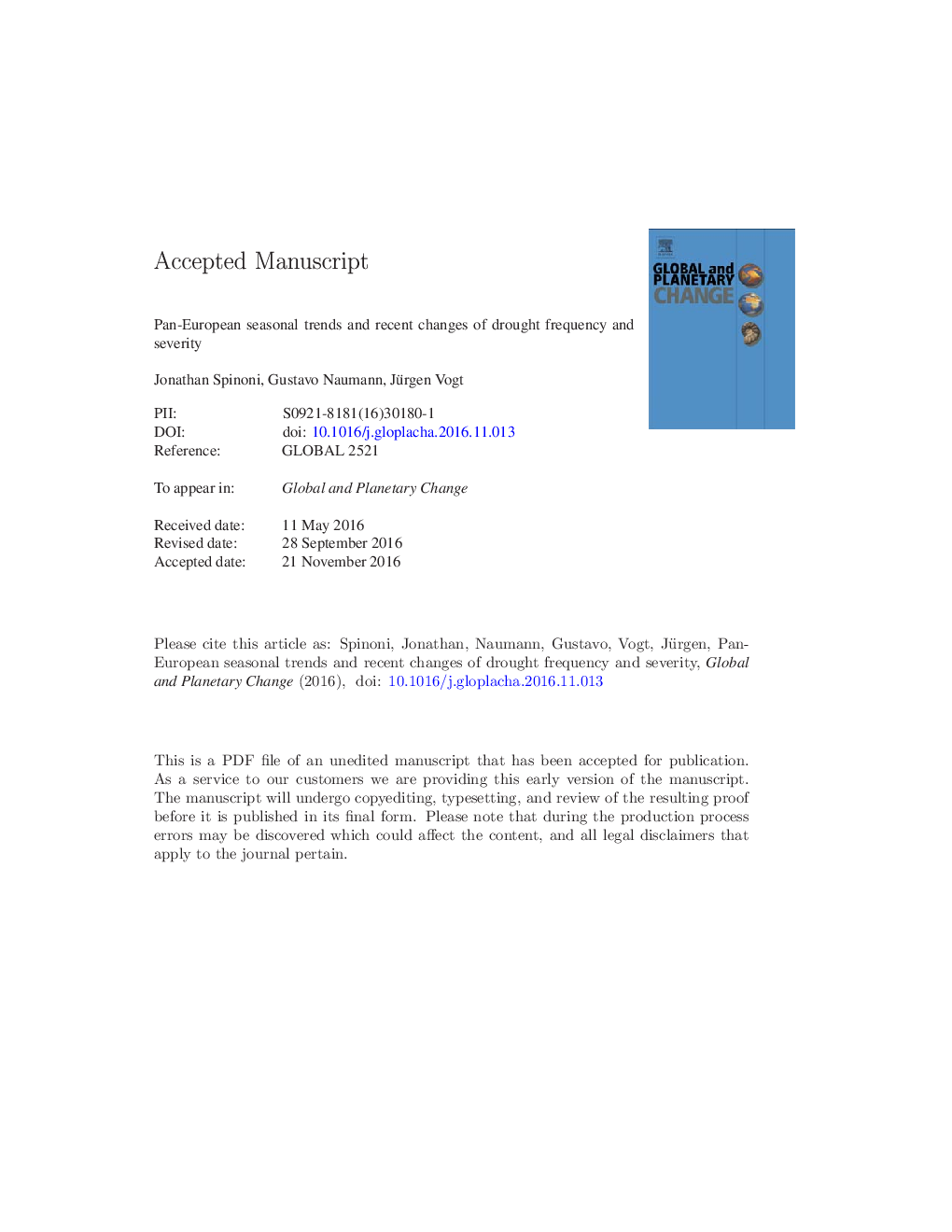| Article ID | Journal | Published Year | Pages | File Type |
|---|---|---|---|---|
| 5755359 | Global and Planetary Change | 2017 | 57 Pages |
Abstract
In the last decades drought has become one of the natural disasters with most relevant impacts in Europe and this not only in water scarce areas such as the Mediterranean that are inclined to such events. As a complex natural phenomenon, drought is characterized by many hydro-meteorological aspects, a large variety of possible impacts and definitions. This study focuses on meteorological drought, investigated by using indicators that include precipitation and potential evapotranspiration (PET), i.e. the Standardized Precipitation Index (SPI) and the Standardized Precipitation-Evapotranspiration Index (SPEI). These indicators account for the lack of precipitation and the drying effects of hot temperatures and in this study have been computed for short-accumulation periods (3-month) to capture the seasonality of droughts. The input variables, monthly precipitation and temperature for 1950-2015, stem from daily gridded E-OBS data and indicators were computed on regular grids spanning over the whole of Europe. PET was calculated from minimum and maximum temperatures using the Hargreaves-Samani formulation. Monthly precipitation and PET have then been used to compute the SPI-3 and the SPEI-3 time series. From these series drought events were defined at seasonal scale and trends of frequency and severity of droughts and extreme droughts were analyzed for the periods 1950-2015 and 1981-2015. According to the SPI (driven by precipitation), results show a statistically significant tendency towards less frequent and severe drought events over North-Eastern Europe, especially in winter and spring, and a moderate opposite tendency over Southern Europe, especially in spring and summer. According to the SPEI (driven by precipitation and temperature), Northern Europe shows similar wetting patterns, while Southern and Eastern Europe show a more remarkable drying tendency, especially in summer and autumn. Both for frequency and severity, the evolution towards drier conditions is more relevant in the last three decades over Central Europe in spring, the Mediterranean area in summer, and Eastern Europe in autumn.
Related Topics
Physical Sciences and Engineering
Earth and Planetary Sciences
Earth-Surface Processes
Authors
Jonathan Spinoni, Gustavo Naumann, Jürgen V. Vogt,
